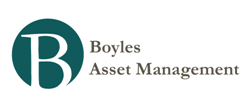Curse the Geniuses Who Gave Us Bank of America - By Jonathan Weil
Ask anyone what the most immediate threats to the global financial system are, and the obvious answers would be the European sovereign-debt crisis and the off chance that the U.S. won’t raise its debt ceiling in time to avoid a default. Here’s one to add to the list: the frightening plunge in Bank of America Corp. (BAC)’s stock price.
At $9.85 a share, down 26 percent this year, Bank of America finished yesterday with a market capitalization of $99.8 billion. That’s an astonishingly low 49 percent of the company’s $205.6 billion book value, or common shareholder equity, as of June 30. As far as the market is concerned, more than half of the company’s book value is bogus, due to overstated assets, understated liabilities, or some combination of the two.
That perception presents a dangerous situation for the world at large, not just the company’s direct stakeholders. The risk is that with the stock price this low, a further decline could feed on itself and spread contagion to other companies, regardless of the bank’s statement this week that it is “creating a fortress balance sheet.”
It isn’t only the company’s intangible assets, such as goodwill, that investors are discounting. (Goodwill is the ledger entry a company records when it pays a premium to buy another.) Consider Bank of America’s calculations of tangible common equity, a bare-bones capital measure showing its ability to absorb future losses. The company said it ended the second quarter with tangible common equity of $128.2 billion, or 5.87 percent of tangible assets.
Investor Doubts
That’s about $28 billion more than the Charlotte, North Carolina-based company’s market cap. Put another way, investors doubt Bank of America’s loan values and other numbers, too, not just its intangibles, the vast majority of which the company doesn’t count toward regulatory capital or tangible common equity anyway.
So here we have the largest U.S. bank by assets, fresh off an $8.8 billion quarterly loss, which was its biggest ever. And the people in charge of running it have a monstrous credibility gap, largely of their own making. Once again, we’re all on the hook.
As recently as late 2010, Bank of America still clung to the position that none of the $4.4 billion of goodwill from its 2008 purchase of Countrywide Financial Corp. had lost a dollar of value. Chief Executive Officer Brian Moynihan also was telling investors the bank would boost its penny-a-share quarterly dividend “as fast as we can” and that he didn’t “see anything that would stop us.” Both notions proved to be nonsense.
Acquisition Disaster
The goodwill from Countrywide, one of the most disastrous corporate acquisitions in U.S. history, now has been written off entirely, via impairment charges that were long overdue. And, thankfully, Bank of America’s regulators in March rejected the company’s dividend plans, in an outburst of common sense.
Last fall, Bank of America also was telling investors it probably would incur no more than $4.4 billion of costs from repurchasing defective mortgages that were sold to investors. Since then the company has recognized an additional $19.2 billion of such expenses, with no end in sight.
- Buffett Says Banks Cleared Of Excess Risk Pose No Threat To U.s.
Thanks to Will for passing this along. Warren Buffett, the billionaire investor who oversees stakes in some of the largest U.S. banks, said the nation’s lenders have rebuilt capital to the point where they no longer pose a threat to the economy. “The...
- Bofa Lawyer Says Settlement Challenger Is Baupost
(Reuters) - Walnut Place, a group of undisclosed investors who oppose Bank of America Corp's (BAC.N) $8.5 billion mortgage bond settlement, is the Baupost Group, a distressed debt fund, according to an attorney for the bank. "Walnut Place is actually...
- Berkshire Hathaway To Invest $5 Billion In Bank Of America
CHARLOTTE, N.C.--(BUSINESS WIRE)-- Bank of America Corporation announced today that it reached an agreement to sell 50,000 shares of Cumulative Perpetual Preferred Stock with a liquidation value of $100,000 per share to Berkshire Hathaway, Inc. in a private...
- Hussman Weekly Market Comment: Earning More By Setting Aside Less
Meanwhile, it is notable that the "favorable" earnings reported by J.P. Morgan and Bank of America in the first quarter were due to reduced provisions for credit losses - charges that are largely discretionary. In the fourth quarter of 2009, J.P. Morgan...
- Option Expiration And A New Option Position
It's time to get caught up on some option moves that have gone through in the past week or so. I had a call option get executed on January 18th and purchased 100 shares of Bank of America. Also last week I sold a call option on Halliburton. I'll...

